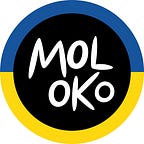Strategy Explorer, or why everyone’s favorite SWOT analysis is not as good as it seems
Strategy Explorer How-to-Use Guide
It is impossible to imagine a brand strategy without analytics, and it is even more difficult to imagine it without such fundamental tools as SWOT analysis or PEST. However, there are so many variations of these techniques in today’s world, and it’s hard to determine which one is ultimately better. Moreover, many brands/agencies often need to pay more attention to the power of these analyses.
In Moloko Creative Agency, we use quite a few approaches during the analysis and research phase, and SWOT is one of them. Here we’ll talk about our vision and why it’s worth using.
First of all, what does a classic SWOT analysis look like? In the most basic sense, it is a matrix that includes strengths, weaknesses, opportunities, and threats. In a slightly more expanded notion, the model also includes strategies that are derived from combining the quadrants of the matrix.
However, as much as we have tried and applied this model, it has one drawback — it is often too abstract or does not represent the full picture of a brand in relationship to its competitors, mission, values, market trends, customers, etc. It seems like SWOT results from an analysis that includes all of these factors, but it’s hard to discern what is interconnected and where a particular strategy direction comes from.
Why is this important, you ask? The answer is simple — finding insight to build a brand strategy often lies in these very «intricacies» that SWOT doesn’t illuminate.
But there is a solution. And it’s Strategy Explorer.
It is a model that was developed by Stefan Pastuszka — a Polish consultant and strategist who helps organizations address their challenges with clarity and structure, thus ensuring better positioning, clear communication, and the development of the right steps for a successful future.
As already mentioned, the model makes it easy to understand the interrelationships between all the elements, SWOT is very harmonious there, and it is structured and a complete picture immediately in front of your eyes.
How to fill it in?
The model consists of several sectors, with the interrelationships between the elements from the center to the edges of the model.
At the very beginning, we fill in the «internal environment» — this is the brand, its vision, mission, values, and main USP.
Then you can alternately move to the right and left, filling first the competitive environment (i.e. the main competitors), and the basic situation on the market, what trends are present in it, what features there are, in the context of four main categories: partners, customers, technology, external environment/market category.
Then the most interesting part.
After we have analyzed the outer nearby circle, it is time for strengths and weaknesses, as well as opportunities and threats. At the same time, if we see a strong correlating relationship between, for example, a certain competitor and the weak side of the brand, we connect these concepts with an arrow. This is how connections are formed.
That said, you can add more creativity, and differentiate these relationships into positive or negative (or any other desirable classification), and highlight the arrows with color. The flight of imagination is unlimited!
Finally comes the final stage: it is the definition of strategic actions, as a result of the highlighted parts of the SWOT and the analysis of the environment, and the brand. They fit already on the edges of the model.
Voila! The puzzle is ready, and immersion and deep analysis allow us to identify non-obvious interrelationships, and consequently, to derive more non-standard/stronger solutions that will be strategically justified.
The final stage in working with the model is the formed strategy framework, where the goals are formed (which of course should be SMART), the direction for positioning is determined, and the weaknesses that are important to level out.
The resulting model is an important asset and a basis for the brand in making strategic decisions, for top management — it is a great help in understanding the state of the company and what actions can, should, or even important to apply to promote the development of the company.
As an agency, we actively use this tool in our work with clients at the stage of research and insights, as a basis for further strategic workshops with the client, as well as in the creation of positioning strategy and the main conclusions for the brand.
It is vital to remember: that the result obtained is a good basis for decision-making and planning the development of the company for 3–5 years. However, today, due to a very actively changing environment and the state of the sphere, updating such a model may be required every year. It is important to take this into account when setting marketing and business goals, as well as when planning the vector of company/brand development.
